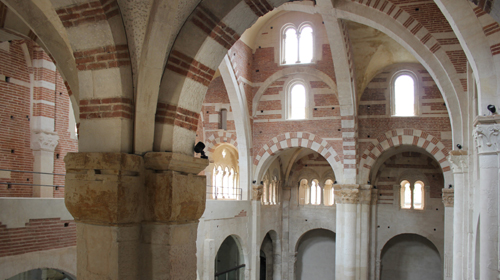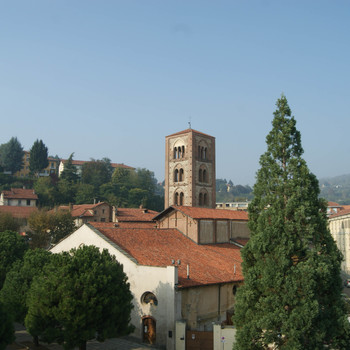Chiesa di San Domenico
Diocesi di Pinerolo ( sec. XV )
La chiesa di San Domenico a Pinerolo si trova al margine del centro storico. Fondata nel XV secolo, insieme all’annesso convento, ora in parte distrutto, conserva all’interno una delle prime attestazioni pittoriche della bottega dei Serra.
Chiesa dei Santi Pietro e Paolo
Diocesi di Ivrea ( sec. XII; XV )
La chiesa dei Santi Pietro e Paolo in Pessano a Bollengo è costruita sul finire dell’anno 1000. La struttura si compone di un’aula unica che termina con un’abside semicircolare, mentre le pareti sono in laterizio.
Gesiùn di Piverone
Diocesi di Ivrea ( sec. XI; XV )
Chiesa unica nel suo genere nella diocesi di Ivrea è il Gesiùn, situato nella campagna di Piverone, verso le pendici della serra, in una zona nota per ritrovamenti di origine molto antica e anche pre-romana.
Chiesa di Nostra Signora del Carmine
Diocesi di Torino ( sec. XII; XV; XVI )
Un tempo parrocchiale di Prascorsano, la chiesa è stata successivamente dedicata alla Madonna del Carmine e adibita a cappella cimiteriale.Lo stile originario è romanico
Romanesque

Significant expressions of Romanesque are to be found in Piedmont. Above all in architecture, this is the art that continued the great building traditions of Rome, following the depression of the Dark Ages. The buildings erected after 1000 still reveal hesitant engineering, with a static quality that emphasizes the walls while the openings allowing light to enter are sparse and small. The master masons, stonecutters and sculptors came from the lakes: the Campionesi from Lugano and the Comacini from Como. These craftsmen spread the language of the renaissance of the art of building. Lombardy led the way in Europe, with nearby Piedmont imitating pace and style, although the assertion of Romanesque was tardy, interspersed with Gothic style features. Important examples are Casale cathedral, Vezzolano abbey and the sturdy Consolata belfry.









